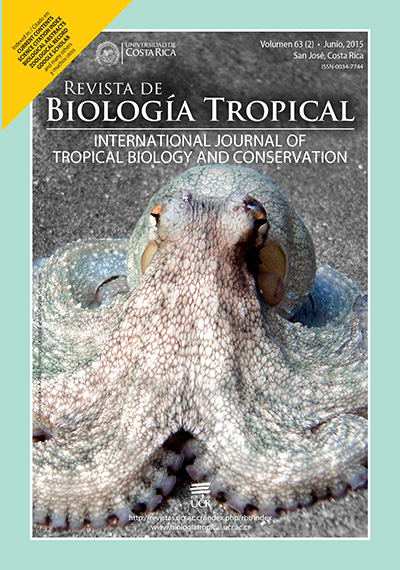Resumen
Las conchas protegen a los moluscos del daño físico, los depredadores y la deshidratación. En este trabajo se estudiaron los diversos usos locales de las conchas y sus propiedades bioquímicas en Abeokuta, Nigeria. Se utilizó un cuestionario estructurado estándar sobre los usos de las conchas, aplicado a 100 vendedores de caracoles y hierbas, conchas de 120 individuos adultos de Archachatina marginata, Achatina Achatina, Achatina fulica, Littorina littorea, Meretrix lusoria y Merceneria mercenaria fueron evaluados para la extracción de los compuestos minerales (Ca2+, Fe2+, Mg2+, Na+, Zn+, P+, K+) y la composición proximal (proteína cruda, materia seca, fibra, contenido graso y carbohidratos) usando métodos estándar. También se analizaron las propiedades de aislamientos contra hongos y bacterias. Las conchas se utilizan para el blanqueamiento, cepillado, abrasión y otros. El peso de las conchas varió de 0.5g (L. littorea) a 25.00g (A. marginata) y el espesor de 0.46mm en M. lusoria a 5.35mm en M. mercenaria. No se encontraron efectos inhibidores de los aislamientos contra hongos y bacterias. Los moluscos resultaron ricos en carbohidratos (83.54-92.76g/100g) y bajos en proteínas (0.16-0.38g/100g). El contenido graso osciló entre 0.42g/100g y 0.82g/100g y la materia seca entre 2.14g/100g y 9.45g/100g. Ca2+ fue el más abundante (10.25-96.35mg/g), mientras que K+ el menos abundante (0.3-0.7mg/g) (p<0.05). Los ingredientes activos de estas conchas se pueden utilizar en la industria alimentaria y de la construcción.Citas
Abiona, J. A., Akinduti, A., Osinowo, O. A., & Onagbesan, O. M. (2013). Comparative evaluation of inhibitory activity of epiphragm from albino and normal skinned giant African land snail (Archachatina marginata) against selected bacteria isolates. Ethiopia Journal of Environmental Studies and Management, 6(2), 177-181.
Ademolu, K. O., Idowu, A. B., Mafiana, C. F., & Osinowo, O. A. (2007). Performance, proximate and minerals analysis of African giant land snail (Archachatina marginata) fed different nitrogen sources. Tropical Veterinarian, 25(4), 124-131.
Adewuyi, A. P., & Ola, B. F. (2005). Application of waterworks sludge as partial replacement for cement in concrete production. Science Focus Journal, 10(1), 123-130.
Adikwu, M. U. (2012). Snail production for sustainable development and good health. In S. I. Ola, G. A. Dedeke, & A. O. Fafiolu (Eds.), Procceedings of the 1st International Conference on Giant African Land snails (NeTGALS) (pp. 3-7). Federal University of Agriculture, Abeokuta, Nigeria.
Adewuyi, A. P. (2014). Relevance of residues of snail farming to civil engineering construction works. In J. A. Abiona, & I. O. Osunsina (Eds.), Proceedings of the 3rd International Conference on Giant African Land Snails (NeTGALS) (pp. 18-25). Federal College of Education, Abeokuta, Nigeria.
Agbelusi, E. A., & Ejidike, B. N. (1992). Utilization of the Giant African Land Snail, Archachatina marginata in the humid area of Nigeria. Journal of Tropical Agriculture, 69, 88-92.
Akinloye, O. A., & Olorode, O. (2000). Effect of different feeding condition on performance, haemolymph biochemical and mineral value of Giant African Snail (Archachatina marginata). Journal of Agriculture and Environment, 1, 143-147.
Akinnusi, F. A. O. (2004). Introduction to Snails and Snail farming. Abeokuta, Nigeria: Gbemi Sodipo Press Ltd.
Amubode, A. A., & Fafunwa, F. (2014). Snail farming and hospitality industries. In In J. A. Abiona, & I. O. Osunsina (Eds.), Proceedings of the 3rd International Conference on Giant African Land Snails (NeTGALS) (pp. 31-36). Federal College of Education, Abeokuta, Nigeria.
Amusan, J. A., & Omidiji, M. O. (1998). Edible Land Snail: A Technical Guide to Snail Farming in the Tropics. lbadan, Nigeria: Verity Printer Limited.
Association of Official Analytical Chemist (A.O.A.C.). (1990). 13th edition. Washington, D.C.: Lexington Books Inc.
Bertine, K. K., & Goldgerg, E. D. (1972). Trace elements in clams, mussels and shrimps. Limnology and Oceanography, 17(6), 877-884.
Egonmwan, R. I. (2008). Effects of dietary calcium on growth and oviposition of the African land snail Limicolaria flammea (Pulmonata:Achatinidae). Revista de Biología Tropical, 56(1), 333-343.
Falade, F. (1995). An Investigation of Periwinkle Shell as Coarse Aggregate in Concrete. Building and Environment, 30(4), 573-577.
Finkelstein, A. D., Wohlt, J. E., & Emmanuele, S. M. (1993). Composition and nutritive value of ground sea clam shells as calcium supplements for lactating Holsten cows. Journal of Dairy Science, 76(2), 582-589.
Hodasi, J. K. N. (1982). The effect of different light regimes on the behavior and biology of Achatina achatina. Journal of Molluscan Studies, 48, 1-7.
Howarth, R. W., & Giblin, A. (1983). Sulphate reduction in salts marshes at Sapelo Island, Georgia. Limnology and Oceanography, 28(1), 70-82.
Idowu, A. B., Somide, O. M., & Ademolu, K. O. (2008). Comparative Analysis of the chemical composition of the haemolymph, flesh and the microflora content of the guts of some African land snails in Abeokuta, Nigeria. Tropical Veterinarian, 26(1&2), 20-29.
Jatto, O. E., Asia, I. O., & Medjor, W. E. (2010). Proximate and mineral composition of different species of snail shell. The Pacific Journal of Science and Technology, 11(1), 416-419.
Kayode, O. V., & Ademolu, K. O. (2014). Antimicrobial and Biochemical properties of Haemolymph from two snail ecotypes. In J. A. Abiona, & I. O. Osunsina (Eds.), Proceedings of the 3rd International conference on Giant African Land Snails (NeTGALS) (pp 45-48). Federal College of Education, Abeokuta, Nigeria.
Muszbek, L., Bagoly, Z., Bereczky, Z., & Katona, E. (2008). The involvement of blood coagulation factor XIII in fibrinolysis and thrombosis. Cardiovascular and Hematological Agents in Medical Chemistry, 6(3), 190-205.
Sodipe, O. G., Osinowo, O. A., Onagbesan, O. M., & Bankole, O. M. (2012). Evaluation of the haemolymph of the Giant African land Snails Achatina achatina and Archachatina marginata for bacteria sterility and inhibitory properties. Proceedings of the 1st International Conference on Giant African Land snails (NeTGALS), Federal University of Agriculture, Abeokuta.
Yusuff, A. A., & Oseni, O. A. (2004). Nutritional value and functional properties of pond snail (Lymnae stagnalis). I. C. Eromosele, & T. O. S. Popoola (Eds.), Proceedings of the 1st International Conference on Science and National Development (pp. 90-93). College of Natural Sciences, Federal University of Agriculture, Abeokuta, Nigeria.
Comentarios

Esta obra está bajo una licencia internacional Creative Commons Atribución 4.0.
Derechos de autor 2015 Revista de Biología Tropical






